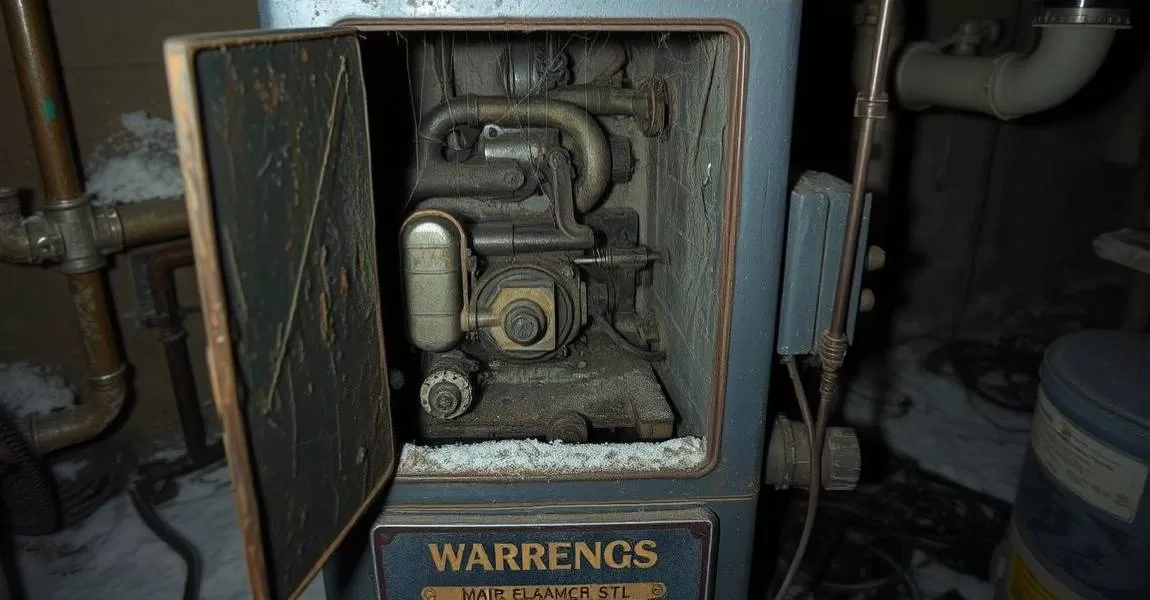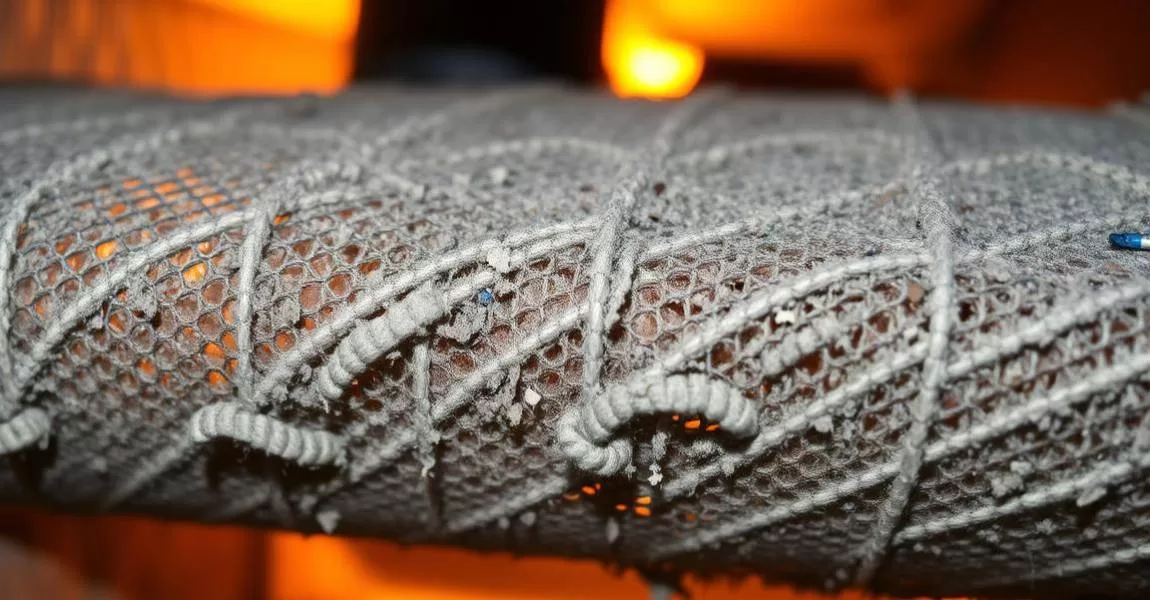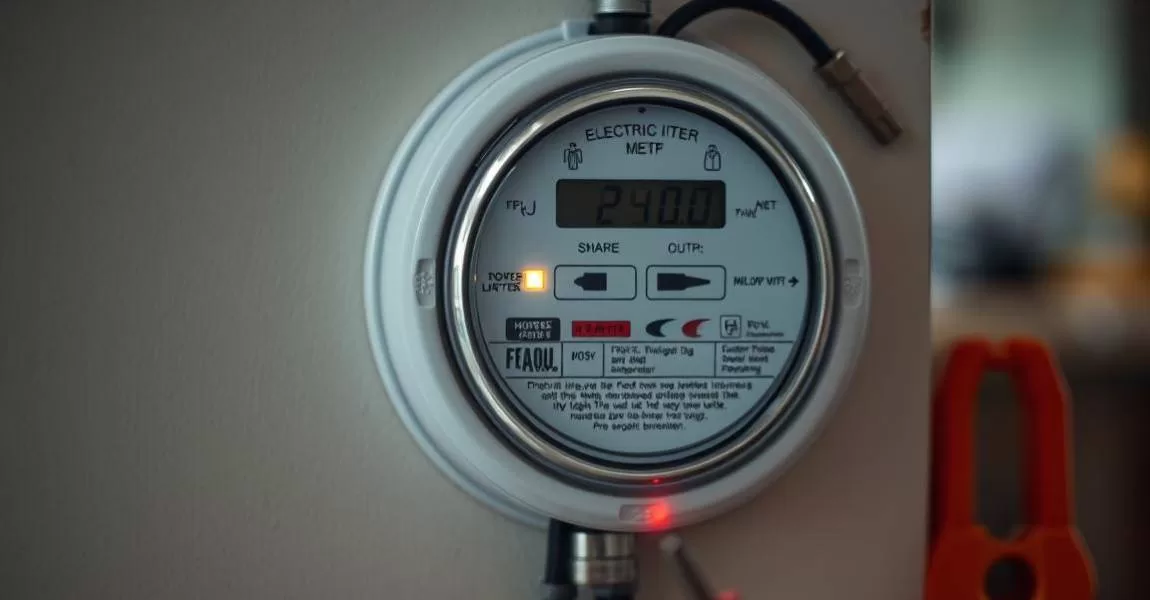Is your Furnace Not Blowing Hot Air? Or maybe it’s blowing cold air instead. With winter upon us, you probably rely on your heating system to keep your home warm. But what do you do when it starts to fail? Are you wondering why this happens or how to fix it?

More than 80% of homes in the United States use gas or electric furnaces to stay warm. The problem could be simple, like the wrong thermostat setting or a dirty filter. Regular check-ups are necessary to keep your furnace running well. If you need help, JD’s Plumbing, Heating, and Air Conditioning is ready at 720 735 9170. But first, let’s look at some things you can check on your own.
Table of Contents
Key Takeaways – Reasons Your Furnace Is Not Blowing Hot Air
- Over 80% of homes in the United States depend on gas or electric furnaces for heating.
- Regular maintenance can stop common furnace issues like thermostat, filter, and pilot light problems.
- A new furnace might cost more than $3,000, but keeping it maintained can make it last longer.
- Dusty filters can hurt your furnace’s work; change them every 1-3 months.
- If fixing your furnace costs more than half the price of a new one, it might be time for a new unit.
Check Your Thermostat Settings
Furnace Not Blowing Hot Air? If your furnace isn’t heating properly, it’s important to check your thermostat. The wrong settings are one of the most common causes of heating problems. Make sure your thermostat is in heat mode. Setting the temperature right can also make your furnace work better.
Thermostat is Set to Heat
First, make sure your thermostat is set to heat. You won’t get warm air if it’s on cool or off. Set the fan to ‘auto’ , not ‘on’. This stops the fan from running all the time without warming the air. Check these settings when it starts to get cold.
Ensure Proper Temperature Setting
Once you’ve set the thermostat to heat, check the temperature. A wrong temperature setting won’t warm your place well. Try raising the temperature to see if your furnace starts heating up. Keep your thermostat settings accurate for the best performance. Check your thermostat often to keep your room temperature steady.
Check the Wiring
Bad wiring can also cause your thermostat to act up. This can mess up the communication with your furnace. Look over the wiring for any obvious damage. If checking this worries you, call experts like JD’s Plumbing, Heating, and Air Conditioning at 720 735 9170. It’s good to regularly check your thermostat to avoid any wiring problems before they get worse.
| Common Thermostat Issues | Recommended Action |
|---|---|
| Thermostat set to cool | Switch to heat mode |
| Inaccurate temperature setting | Adjust to desired temperature |
| Fan control set to ‘on’ | Set fan control to ‘auto’ |
| Drained battery | Replace thermostat batteries |
| Disconnected wiring | Inspect and reconnect wiring |
| Faulty temperature sensor | Replace or recalibrate sensor |
Inspect the Furnace Filter
Keeping your furnace filter clean is critical to a well-running heating system. The filter catches dust and particles that slow airflow. Overheating and shutting down your furnace can lead to cold air in your home.

Make Sure the Furnace Filter is Clean
To ensure your heating works well, check the filter’s cleanliness. If no light shines through it, replace the filter. The Centers for Disease Control and Prevention suggest getting your system checked yearly by a pro to prevent dangers like Carbon Monoxide poisoning.
Replace a Clogged Filter
A clogged filter needs quick replacement. It strains your system and lowers its efficiency. Change a dirty filter every three months for better warm air flow and to avoid expensive fixes. For help, call JD’s Plumbing, Heating and Air Conditioning at 720-735-9170.
Want more furnace troubleshooting tips? Check out Troubleshooting Common Furnace Problems for advice on keeping your home warm in winter.
| Maintenance Task | Frequency | Purpose |
|---|---|---|
| Replace Filter | Every 1-3 months | Ensure optimal airflow and efficiency |
| Inspect Thermostat | Annually | Prevent misreadings and ensure proper operation |
| Service Heating System | Annually | Avoid hazardous emissions and maintain performance |
Examine the Gas Supply
It is crucial for your gas furnace to have a reliable gas supply to work well. Without enough gas, your furnace can’t produce the heat you need. To make sure your furnace is getting enough gas, follow these steps:
Make Sure the Gas Valve is Open
Checking if the gas valve is open is a critical first step. If the valve is closed, no gas can flow to the furnace, stopping it from working. Find the gas valve along the gas line and ensure it is open. This is very important for natural gas furnaces.
Check the Pilot Light
Older gas furnaces usually have a pilot light, a small flame that starts the burners. Look through the viewing window to see if the flame is on. If not, carefully follow the manufacturer’s guide to relight it. Make sure to regularly check the pilot light to keep it lit.
Inspect Natural Gas Supply
For those with natural gas, checking the supply is vital. Inspect the gas lines for damage or leaks. If you find any issues with your gas supply, contact your gas provider for help. Also, check that the gas from sources like propane is not interrupted.
If problems keep happening or the furnace won’t stay on or work well, get help. Call a professional from JD’s Plumbing, Heating and Air Conditioning at 720-735-9170. They can give you expert advice and service, especially for issues with the heat pump.
Look at the Electric Supply
Make sure your electric furnace works well by checking its power supply. If it’s not heating up, it might be because of electrical problems you can find. Check it out.
Check the Breaker
Check the breaker in your electrical panel first. If it’s tripped, the furnace won’t work. Find the right breaker and reset it if necessary. Keep in mind that furnaces need electricity to run, so a bad electric supply could be why it’s not working.
Inspect the Power to the Furnace
Looking at the furnace’s power is critical. Sometimes, switches are turned off by mistake, and the furnace stops. Check all the switches, especially by the furnace, and turn them on. There might be a problem with parts like the blower motor if there’s no warmth. This usually means you’ll need someone’s help.
Look at the Disconnect Switch by the Furnace
Lastly, check the disconnect switch by the furnace. It’s a safety feature that turns off the power in emergencies. Make sure it’s not off by mistake; check to make sure the settings are correct.

If your furnace still isn’t working after these steps, contact a pro. JD’s Plumbing, Heating, and Air Conditioning has skilled technicians ready to help with heating issues at any time.
Furnace Not Producing Heat
Having a furnace that won’t work during cold months can be worrying. Knowing how to troubleshoot common problems can help. This might let you fix the issue without needing an expert.
Troubleshoot Before Calling An HVAC Technician
First, check if the thermostat is set to ‘HEAT.’ Also, ensure it’s at a temperature that will start the furnace. Many people call for service without checking the thermostat first. Then, look at the furnace filter. Changing a dirty filter can fix airflow problems, so heat spreads well in your home.
- Check if the filter is clean to prevent airflow interruptions.
- Ensure proper cleaning and maintenance of the burner assemblies annually.
- Verify the gas valve is open for proper fuel supply.
Check for any blockages near your furnace to ensure enough heat is produced. Dust and lint, especially around the heat exchanger, can lead to big problems and are a fire risk. Also, high-efficiency furnaces might stop working if their moisture drainage is blocked, leading to a service call.
Furnace Repair
If your furnace still doesn’t work, it might be time for expert help. Issues like ignition failures or motor belt troubles require a trained HVAC technician. Trying to light furnaces yourself is risky, so always get a professional. Read our Denver Furnace Repair Guide!
JD’s Plumbing, Heating, and Air Conditioning offers help with complicated issues. Their skilled technicians can quickly find and fix your furnace problems. Always rely on experts to keep your heating system safe and working properly.
Keeping your HVAC system in good shape prevents many problems. If it’s freezing and your furnace isn’t heating well, call for help. A pro can check and fix your furnace fast.
Furnace Maintenance
Keeping up with your furnace maintenance is critical to making it last longer and work better. Things like checking, looking it over, and changing filters keep your furnace running right. Taking care of simple issues, like checking the ductwork, dirty filters, or thermostats, can prevent more significant problems.
Many furnace issues happen because dust and dirt block filters. A seasonal tune-up helps find and fix these problems early. In a tune-up, a pro checks for things like blocked burners and old fan belts. Without attention, these can cause more extensive, costly repairs.
Don’t forget about your ducts and vents. If they’re blocked or leaky, your house won’t heat evenly. Regular checks and cleaning keep air moving freely. This makes your system more efficient. Also, clear any blockages in your vents for even heat.
- Check your furnace for signs of trouble, like worn belts or rust.
- Changing your furnace filters every 1-3 months keeps air flowing well.
- Get a regular service check from a licensed tech at JD’s Plumbing, Heating, and Air Conditioning at 720 735 9170. This ensures your furnace is ready to go when you need it most.
- Make sure your thermostat settings are right to avoid unnecessary repairs.
- Keep your duct and vent systems clear and leak-free for consistent heating.
Fixing common furnace problems early can often save you from expensive repairs. For example, high-efficiency furnaces might drain a lot of water, leading to blocked drains. Regular heating system maintenance keeps everything working right. This helps avoid extensive shutdowns. Caring for your furnace regularly can work well for 15 to 20 years, or even more.
| Maintenance Activity | Frequency | Benefits |
|---|---|---|
| Filter Replacement | Every 1-3 months | Prevents airflow problems |
| Professional Tune-Up | Annually (Seasonal) | Identifies potential issues early |
| Visual Inspections | Every 3-6 months | Detects wear and tear |
| Duct and Vent Cleaning | Every 6 months | Ensures even heat distribution |
Staying on top of your home heating system maintenance keeps your home warm when it’s cold out. It also makes your system use less energy, which saves you money on service calls. Taking good care of your furnace is a smart move. It brings you comfort, safety, and efficiency at home.
Conclusion Furnace Not Blowing Hot Air
It’s a big bummer to realize your furnace isn’t warming up your home. But don’t worry; you’ll be able to check a few things before calling in the experts. First, peek at the thermostat. Make sure it’s on the right setting and that the temperature is set to kick on the heater. Another culprit could be a filthy air filter blocking the warm air.
Remember to check if all vents are free from blockages. This allows heat to move freely. If you’ve tried these steps and still get cold air, check the fuel supply. Issues with the ignition or electricity could also be at fault. If these steps don’t fix the problem, it might be time for professional help. Getting your furnace checked yearly can spot and fix small problems early on, keeping things running smoothly.
When you’ve tried everything and your furnace still won’t heat up, calling experts like JD’s Plumbing, Heating and Air Conditioning at 720 735 9170 becomes essential. They are skilled at finding and fixing complex problems, whether a fuel issue or something with the HVAC setup. Keeping up with regular checks and cleanings boosts your furnace’s efficiency and life span. For more info on furnace problems and professional help, click here to visit to schedule service.
FAQ
What Should I Do First If My Furnace Is Not Producing Heat?
Start by looking at simple issues. Check the thermostat, the filter, and the gas-supply. Also, ensure the electric supply is stable. These steps can often reveal if the fix is easy.
How Do I Check The Thermostat Settings?
First, ensure your thermostat is on heat mode. The temperature setting should be higher than the room’s. Also, the fan should be on ‘auto’. Proper settings can solve many heating problems.
Why Is The Cleanliness Of The Furnace Filter Important?
A clean filter is key for good airflow and prevents the furnace from getting too hot. Dirty filters can cause the furnace to blow cold air or even shut off. Replace your filter every three months to keep things running smoothly.
How Do I Ensure The Gas Supply To My Furnace Is Adequate?
Make sure the gas valve is open. For older furnaces, check if the pilot light is on. Look for disruptions in the natural gas supply. A steady gas flow is crucial for proper furnace operation.
What Should I Check In The Electric Supply If The Furnace Isn’t Working?
Check the circuit breaker for any trips. Look over the power route to your furnace. Also, examine the external disconnect switch. Resetting the breaker or repairing blown fuses can bring back power.
When Should I Call A Professional Technician For Furnace Problems?
If you’ve tried basic troubleshooting with no luck, it’s time to contact an expert at JD’s. Call an HVAC technician if the problem is complex or if you’re unsure about handling it.
How Often Should Furnace Maintenance Be Performed?
It’s best to do maintenance at least yearly, preferably before it gets cold. This involves service appointments, visual checks, and changing filters. This routine care keeps your furnace working well and lasting longer.
What Are Some Common Furnace Problems That Regular Maintenance Can Prevent?
Regular care helps avoid many issues, including dirty filters, clogged burners, and thermostat troubles. It also prevents wear on ball bearings and fan belts. An HVAC technician can catch and fix these early on during a maintenance visit.





